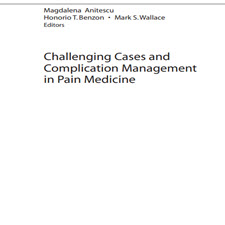Capability maturity models for offshore organisational management
ABSTRACT
The goal setting regime imposed by the UK safety regulator has important implications for an organisation’s ability to manage health and safety related risks. Existing approaches to safety assurance based on risk analysis and formal safety assessments are increasingly considered unlikely to create the step change improvement in safety to which the offshore industry aspires and alternative approaches are being considered. One approach, which addresses the important issue of organisational behaviour and which can be applied at a very early stage of design, is the capability maturity model (CMM). The paper describes the development of a design safety capability maturity model, outlining the key processes considered necessary to safety achievement, definition of maturity levels and scoring methods. The paper discusses how CMM is related to regulatory mechanisms and risk based decision making together with the potential of CMM to environmental risk management.
INTRODUCTION
All businesses need to manage the health and safety, environmental and financial risks to which they are exposed and good risk management practice is now recognised as essential at the highest business level (Turnbull, 1999). In the UK the management of safety and environment are subject to regulatory controls which aim to ensure that companies place proper and appropriate emphasis on these important issues. However, the regulatory approach has important implications for the organisation and in particular their capability to manage safety and risk. In the safety field, ever since the 1974 Health and Safety at Work Act, the UK has been creating a “goal setting” regulatory framework (Health and Safety Commission, 2004) in which those who create the risks are made responsible for assessing and controlling them. This includes demonstrating that the risks have been reduced to a level which is acceptable or is as low as reasonably practical. In the UK environmental field, an integrated approach to pollution protection and control has been adopted (DEFRA, 2004). This regulatory regime, while not risk based, is certainly target setting in approach. Its main purpose is to achieve a high level of protection by prevention of emissions or, where this is not possible, by reducing emissions to air, water and land.
چکیده
رژیم تنظیم مقررات توسط تنظیم کننده ایمنی در انگلستان پیامدهای مهمی برای توانایی سازمان برای مدیریت خطرات مربوط به سلامت و ایمنی دارد. رویکردهای موجود برای تضمین ایمنی بر اساس تجزیه و تحلیل ریسک و ارزیابی ایمنی رسمی به طور فزاینده ای در نظر گرفته می شود که بعید به نظر می رسد که باعث بهبود وضعیت تغییر در ایمنی می شود که صنعت دریایی در آن مورد توجه قرار گرفته و روش های جایگزین در نظر گرفته شده است. یک رویکرد که مسئله مهم رفتار سازمانی را مورد توجه قرار می دهد و می تواند در یک مراحل اولیه طراحی مورد استفاده قرار گیرد، مدل بلوغ توانایی (CMM) است. این مقاله توسعه یک مدل بلوغ ایمنی طراحی طراحی، با تشریح فرایندهای کلیدی مورد نیاز برای دستیابی به ایمنی، تعریف سطوح بلوغ و روش های به ثمر رسیدن است. این مقاله در مورد چگونگی ارتباط CMM با مکانیزم های قانونی و تصمیم گیری مبتنی بر ریسک همراه با پتانسیل CMM برای مدیریت ریسک زیست محیطی بحث می کند.
مقدمه
همه کسب و کارها باید مدیریت خطرات بهداشتی و ایمنی، خطرات زیست محیطی و مالی را در معرض خطر قرار دهند و مدیریت ریسک خوب در حال حاضر در بالاترین سطح کسب و کار شناخته شده است (Turnbull، 1999). در انگلستان مدیریت ایمنی و محیط زیست تحت کنترل نظارتی قرار دارد که هدف آن اطمینان از این است که شرکت ها بر این مسائل مهم تأکید مناسب و مناسب داشته باشند. با این حال، رویکرد نظارتی پیامدهای مهمی برای سازمان دارد و به ویژه توانایی آنها برای مدیریت ایمنی و ریسک. در زمینه ایمنی، از سال 1974 قانون سلامت و ایمنی در محل، انگلستان ایجاد چارچوب قانونی “تنظیم هدف” (کمیته بهداشت و ایمنی، 2004) است که در آن کسانی که خطرات را ایجاد می کنند مسئول بررسی و کنترل آنها این شامل نشان دادن این است که خطرات به میزان قابل قبول یا کم به اندازه عملی عملی کاهش یافته است. در حوزه محیط زیست بریتانیا، یک روش یکپارچه برای حفاظت و کنترل آلودگی (DEFRA، 2004) تصویب شده است. این رژیم نظارتی، در حالی که مبتنی بر ریسک نیست، مطمئنا تنظیم هدف در رویکرد است. هدف اصلی آن دستیابی به سطح بالایی از حفاظت از طریق جلوگیری از انتشار گازهای گلخانه ای یا، در صورت امکان، کاهش انتشار گازهای گلخانه ای به هوا، آب و زمین است.
Year: 2006
Publisher : ELSEVIER
By : J.E. Strutt , J.V. Sharp , E. Terry b, R. Miles
File Information: English Language/ 12Page / size: 1.11 KB
سال : 1385
ناشر : ELSEVIER
کاری از : J.E. Strutt , J.V. Sharp , E. Terry b, R. Miles
اطلاعات فایل : زبان انگلیسی / 12صفحه / حجم : KB 1.11


![Capability maturity models for offshore organisational management[taliem.ir]](https://taliem.ir/wp-content/uploads/Capability-maturity-models-for-offshore-organisational-managementtaliem.ir_.jpg)
![An expert system hybrid architecture to support experiment[taliem.ir] An expert system hybrid architecture to support experiment[taliem.ir]](https://taliem.ir/wp-content/uploads/An-expert-system-hybrid-architecture-to-support-experimenttaliem.ir_.jpg)
![Health information systems Failure, success[taliem.ir] Health information systems Failure, success[taliem.ir]](https://taliem.ir/wp-content/uploads/Health-information-systems-Failure-successtaliem.ir_.jpg)
![Design and development of logistics workflow systems for demand[taliem.ir] Design and development of logistics workflow systems for demand[taliem.ir]](https://taliem.ir/wp-content/uploads/Design-and-development-of-logistics-workflow-systems-for-demandtaliem.ir_.jpg)
![Diagnosis.and.Management.of.Breast.Tumors.A.Practical.[taliem.ir] Diagnosis.and.Management.of.Breast.Tumors.A.Practical.[taliem.ir]](https://taliem.ir/wp-content/uploads/Diagnosis.and_.Management.of_.Breast.Tumors.A.Practical.taliem.ir_.jpg)
![Layered Structure and Management in Internet of Things[taliem.ir] Layered Structure and Management in Internet of Things[taliem.ir]](https://taliem.ir/wp-content/uploads/Layered-Structure-and-Management-in-Internet-of-Thingstaliem.ir_-1.jpg)
![Using Data Mining to[taliem.ir] Using Data Mining to[taliem.ir]](https://taliem.ir/wp-content/uploads/Using-Data-Mining-totaliem.ir_.jpg)
![Working Capital Management and Profitability of Firms A[taliem.ir] Working Capital Management and Profitability of Firms A[taliem.ir]](https://taliem.ir/wp-content/uploads/Working-Capital-Management-and-Profitability-of-Firms-Ataliem.ir_.jpg)


![Performance Characteristics of a Sliding-Scale Hypertonic Saline[taliem.ir]](https://taliem.ir/wp-content/uploads/Performance-Characteristics-of-a-Sliding-Scale-Hypertonic-Salinetaliem.ir_-150x150.jpg)
![Making urban territories more resilient to flooding by improving the[taliem.ir]](https://taliem.ir/wp-content/uploads/Making-urban-territories-more-resilient-to-flooding-by-improving-thetaliem.ir_-150x150.jpg)
دیدگاه خود را ثبت کنید
تمایل دارید در گفتگو شرکت کنید؟نظری بدهید!